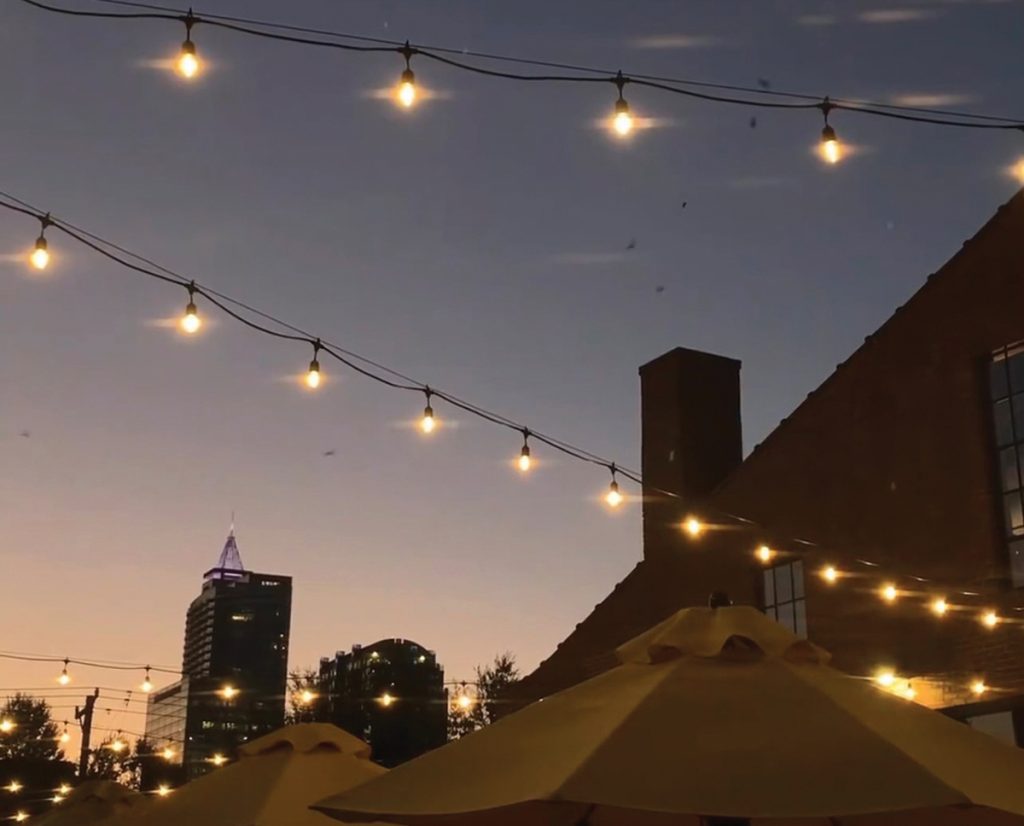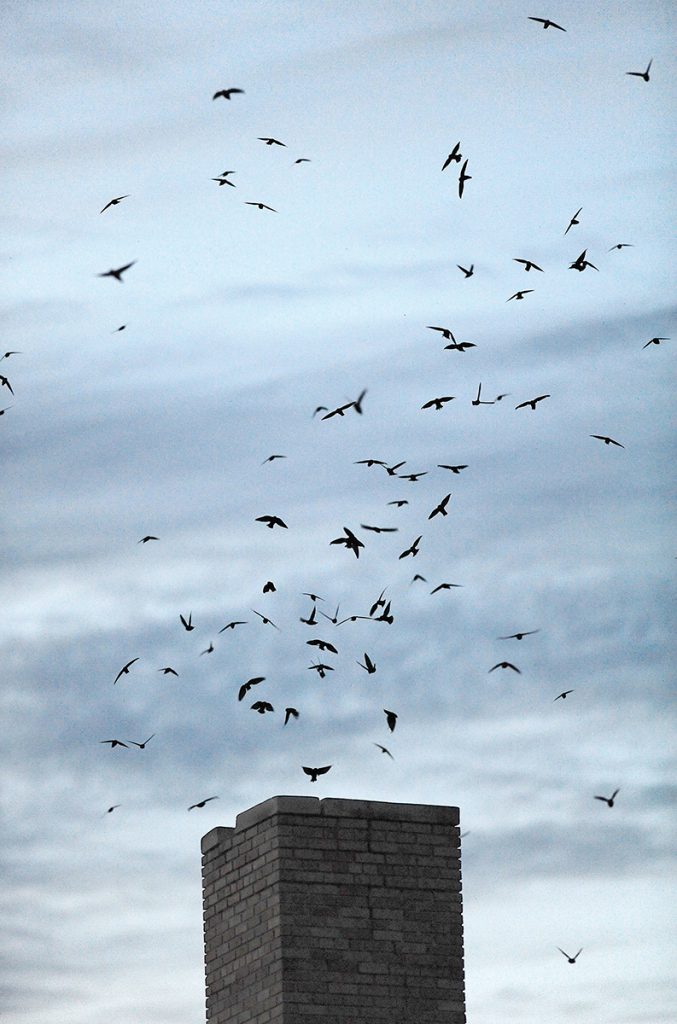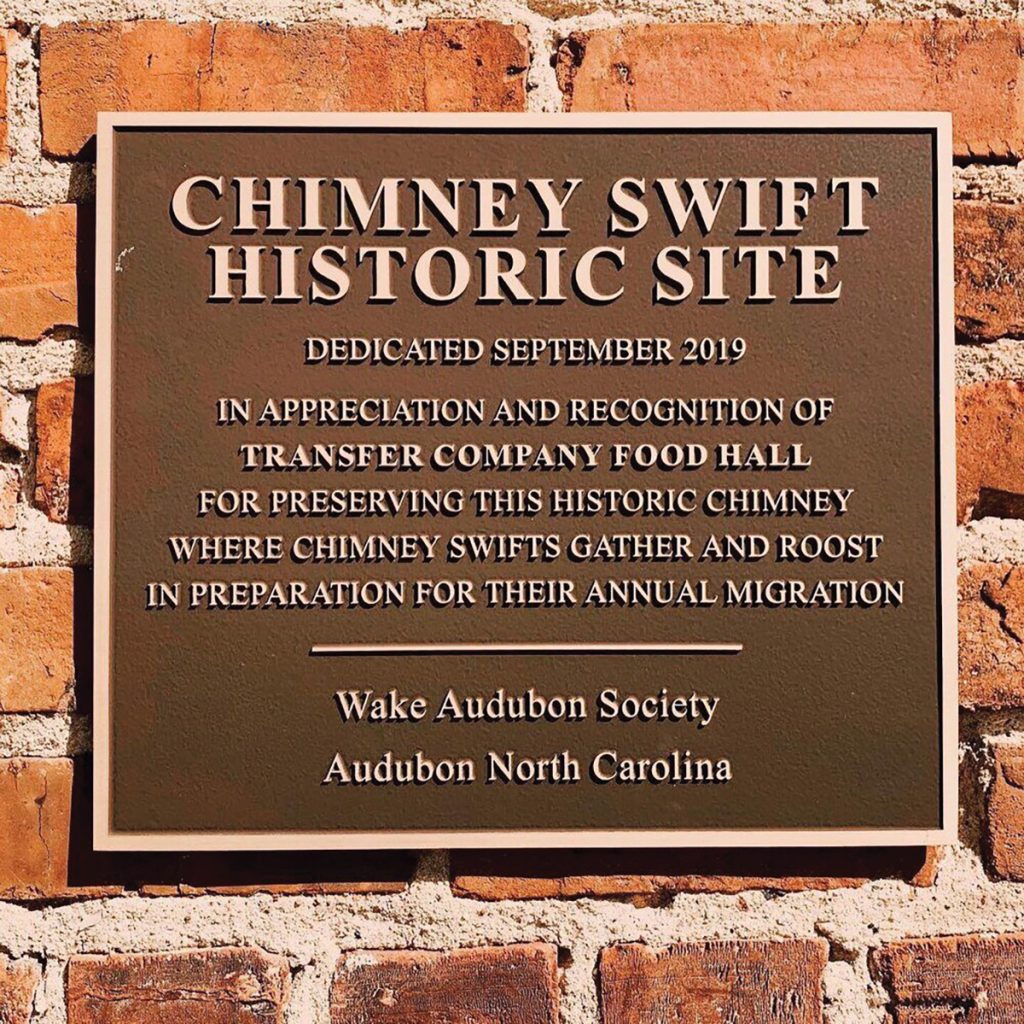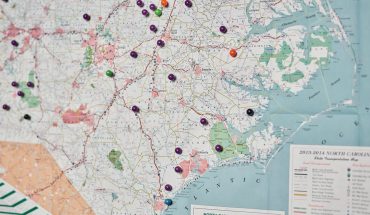This annual wildlife phenomenon only lasts for a few weeks a year, and it’s easy to to see — if you know where to look.
by Ayn-Monique Klahre

Just before twilight, the whirlpool begins: chimney swifts, by the hundreds or thousands, heading into cavernous spaces to roost. They swirl in a tightening circle, up to 20 or 30 miles per hour, heading toward tiny openings.
“It happens in cities and towns all over North Carolina at the same time every night, and most people don’t even notice it,” says John Connors, a naturalist with Wake Audubon Society.
These “swirls,” as they’re called, are most obvious from late September through early October, when swifts are migrating from further north down to the upper Amazon regions of Brazil and Peru. (They’ll come back here the first or second week of April.)
During the day, chimney swifts fly nonstop, eating insects out of the air. “They’re masters of the sky,” says Connors. They’ll forage over lakes or big grassy fields, gobbling up mosquitos and flying ants.
Then, season after season, they head to the same chimneys for the night. When they get there, “they slow everything down, spread out their feathers and turn their bodies,” says Connors.
“They actually go in tail first!” Inside the chimneys, the birds grip the bricks with their claws to descend, then pack in like sardines, grooming their feathers before they go to sleep.
Some of the most common places for these swifts to nest are in the old chimneys of school buildings — around here, they’ve been seen at Broughton High School, Hunter Elementary School and Ligon Middle School, among others.
“There are fewer roosting spots than there used to be; many of the schools have taken down the chimneys as they renovated the HVAC system,” says Connors, who along with Wake Audubon has been working with building owners to preserve spaces where the swifts can roost.
If you’re interested in seeing a swirl, just look up — or visit the events page at Wake Audubon (wakeaudubon.org) as they often host guided viewings downtown in peak season. “Usually, if you want to see something spectacular, you have to travel — but this is a phenomenon that happens right in front of us, every night, for a few weeks each year,” says Connors.
This article originally appeared in the October 2023 issue of WALTER magazine.






